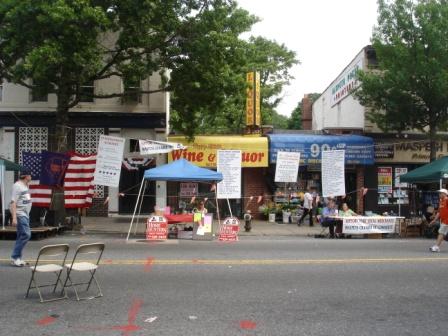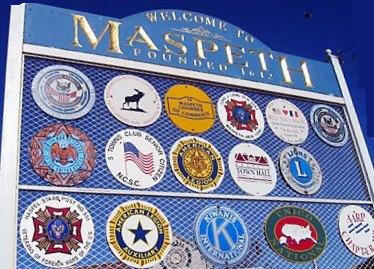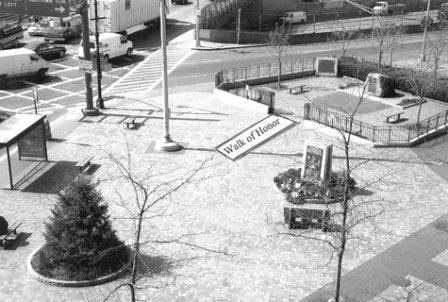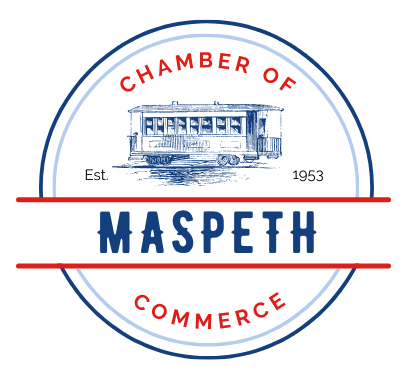History of Maspeth
Our History
Maspeth is a community that has thrived for many many years. The original deed issued by the colony of New Netherlands for the Maspeth area was in 1642. It is the oldest deed on Long Island. Then, Maspeth was home to, and named for, the Mespeatches tribe of Native Americans. “Mespeatches” is translated to mean “at the bad waterplace,” describing the many stagnant swamps that existed in the area. The original Indian village was located on rising ground east of Mt. Zion Cemetery. Dutch and English colonists of the Dutch West India Company settled along the Newtown Creek between 1621 and 1638. The first formal colonization began in 1642 with the “Newtown Patent” which granted over 13,000 acres of land to those wishing to settle and develop the land now represented by all of Western Queens County. Twenty-eight English settlers, mostly of the Quaker religion, began the village of Maspeth. Maspeth served as the center of the water trade with New Amsterdam and as the center for milling. Tide mills, that ground grain into flour, were established along Newtown Creek, Maspeth Creek, and their tributaries. Today, the Maspeth Chamber of Commerce, as well many other neighborhood organizations proudly welcome visitors entering the community on the sign located at the Memorial Plaza (at Grand Avenue and the LIE) shown to the right. Present-day Maspeth is a neighborhood of families, small shops and businesses, and restaurants.

Maspeth is a community rich in history. Mount Olivet Cemetery, for example, dominates the area on the highest land in Maspeth. Mount Olivet, probably because of its incredible views of Manhattan, was once a James Maurice housepopular weekend destination to 19th Century Manhattan families. The first
meeting to discuss the formation of the cemetery was on March 26, 1850 at the house of James Maurice in Maspeth. Mount Olivet’s famous residents include cosmetics entrepreneur Helena Rubinstein Courielli and the 16 unidentified victims of the Triangle Shirtwaist Factory Fire.
Maspeth is also a community for great dining with its many restaurants, diners, delicatessens, bakeries and other fine eateries.

The first storekeepers to serve Maspeth were Nathanial Hazard and Francis T. White. Their foodstuffs and clothing stores were located at the Maspeth Town Dock, at 56th Terrace and Rust Street, during the late 1700’s. Great developments and growth of Maspeth took place after the Revolutionary War. Colonial roads were resurfaced with crushed oyster shells or with wooden planks. Early businesses included Peter Cooper’s Glue Factory, Lawrence’s Rope Works, Cord Meyer’s Animal Carbon Plant, Sampson Oil Cloth Factory, James Inglis’ Shirt Factory, A. Fisk Metal Casket Company, Mt. Olivet Cemetery, Laurel Hill Chemical Works, Haberman’s Tin Factory, Gimpel Brothers Dairy, Beyer’s Dairy, Gruebel Plumbing, Griffs Hardware, Maspeth Press and K-Ting Rope.

Maspeth’s Memorial Square, located in the heart of Maspeth and Grand Avenue and 69th Street is a memorial ground of plaques, benches and memorials that honor Maspeth Residents, Veterans and the Nineteen Firefighters from Maspeth’s FDNY Squad 288 & HAZMAT 1, who died on 9-11. A new addition to the Memorial Square is the Walk of Honor, revealed Memorial Day 2006. The Walk of Honor pays tribute to Maspeth activists and visionaries who helped shape the Maspeth Community.
The Maspeth Community offers recreational areas to its families. These areas include the Frontera Park at 69th Street and the Long Island Expressway and Principe Park (formerly Maurice Park) located at Maurice Avenue and 54th Avenue. Here, Maspeth families enjoy swings, jungle gyms, sports fields and courts and seating areas.
There are many houses of worship serving the Maspeth Community. In addition to serving the spiritual needs of our community, they too support our town with their many programs and services.

